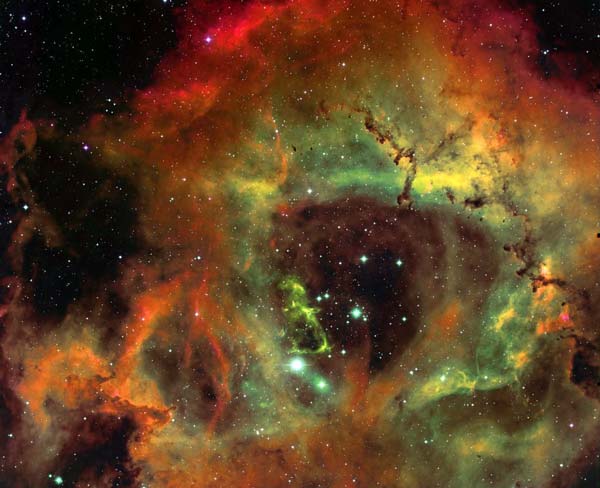The Rosette Nebula in Hydrogen, Oxygen, and Sulfur

Explanation:
The Rosette Nebula is a large
emission nebula located 3000 light-years away.
The great abundance of
hydrogen gas gives
NGC 2237 its red color in most
photographs.
The
wind from the
open cluster of stars known as
NGC 2244 has cleared a hole in the nebula's center.
The
above photograph, however,
was taken in the light emitted by
three elements of the gas ionized by the energetic central stars.
Here green light originating from
oxygen and blue light originating from
sulfur supplements the red from hydrogen.
Filaments of dark
dust lace run through the nebula's gases.
The origin of recently observed
fast-moving molecular knots
in the Rosette Nebula remains under investigation.
Authors & editors:
Robert Nemiroff
(MTU) &
Jerry Bonnell
(USRA)
NASA Web Site Statements, Warnings,
and Disclaimers
NASA Official: Jay Norris.
Specific
rights apply.
A service of:
LHEA at
NASA /
GSFC
& Michigan Tech. U.

